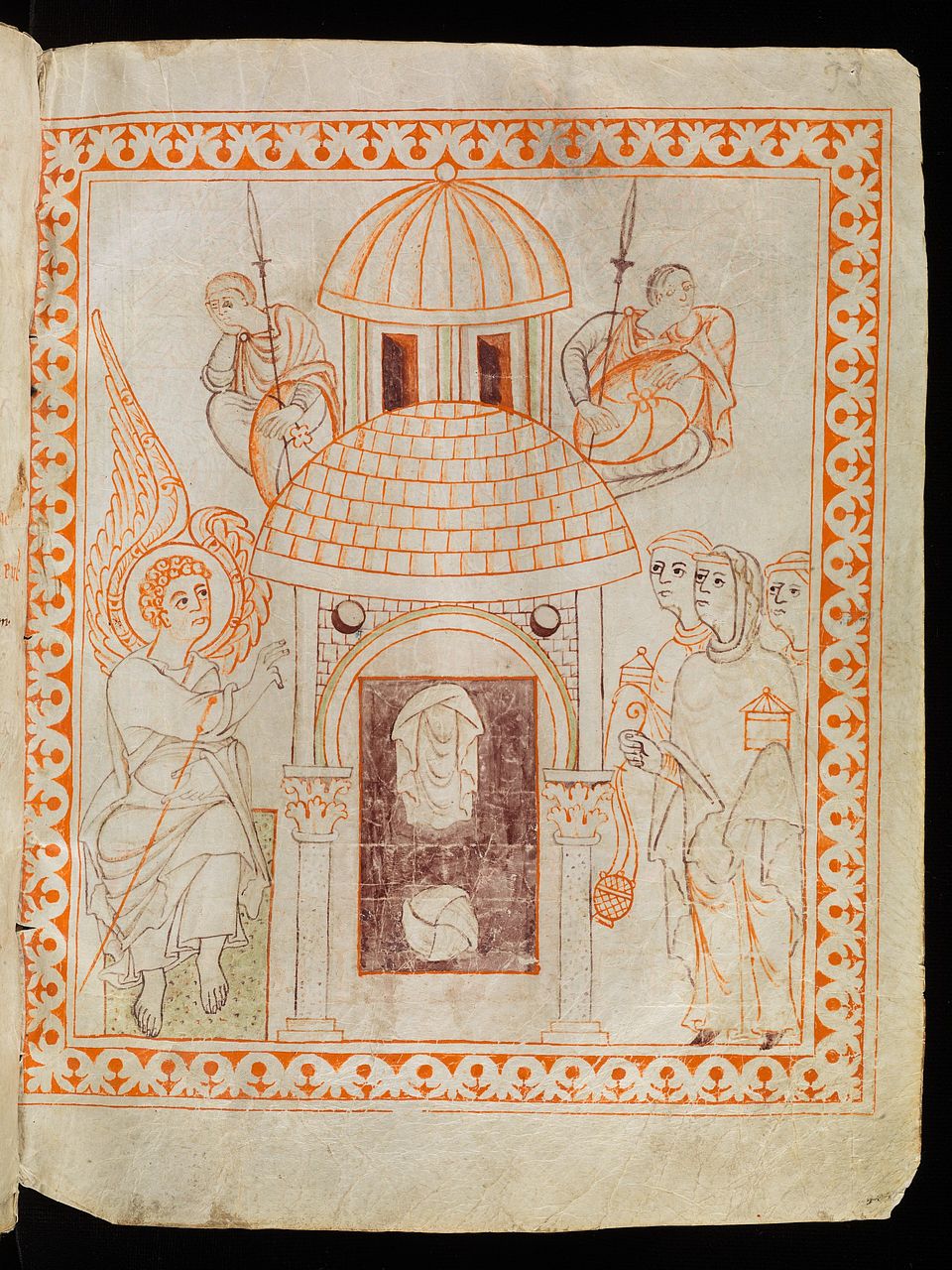Projekt
As a NOMIS fellow, I am working on my book manuscript for “Non est hic: Figuring Christ’s Absence in Early Medieval Art,” which is based on but significantly expands my dissertation in Art History from the University of Chicago (defended in April, 2019). The project examines works of art made ca. 950-1050 CE in which Christ’s figural absence is thematized visually or his figure is deliberately obscured from the beholder.
Christ’s absence from earth was a focal point for medieval Christians: according to the Gospel accounts of Christ’s life, Christ’s incarnation on earth culminated and ended in his bodily Ascension. After Christ’s Resurrection, he appeared repeatedly in a glorified embodied form to his followers. This period of miraculous corporeal presence came to an end with his ascension to heaven. Following Christ’s bodily departure, Christians believed that Christ would remain bodily in heaven until he returned to judge the living and the dead at the end of time. A central point of access to Christ’s presence on earth for most devotees came in the form of his “real presence” in the Christian ritual meal of the Eucharist. For medieval Christians (as for many today), Christ’s absence from earth and presence in heaven was a central but challenging tenet that could not be confirmed by sense experience.
Around the year 1000, artists began to respond to the aesthetic and theological challenge of representing Christ’s absence in new ways. At this time, I argue, artists experimented with new iconographic and formal models to figure Christ’s visual absence and also qualify it, not least by visually asserting that the institutional and mystical body of the church became a christological proxy, or persona for Christ on earth. I examine this development—at once art historical and religious—in a series of objects produced for use in Christian liturgy or ritual, precisely the context in which new claims for the exclusive sacredly mediatory role of male, clerical elites were being promoted.
My project contends with the widely held understanding that early medieval works of art were, first and foremost, intended to propel the beholder’s mind beyond the material image to ineffable or invisible divine mysteries. I argue that artists figured Christ’s absence without negating the art object through highly creative formal, material, and iconographic means.

